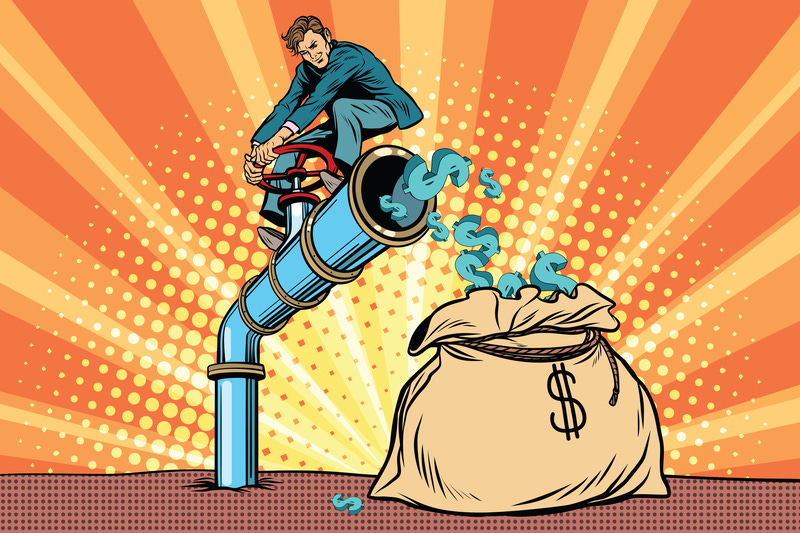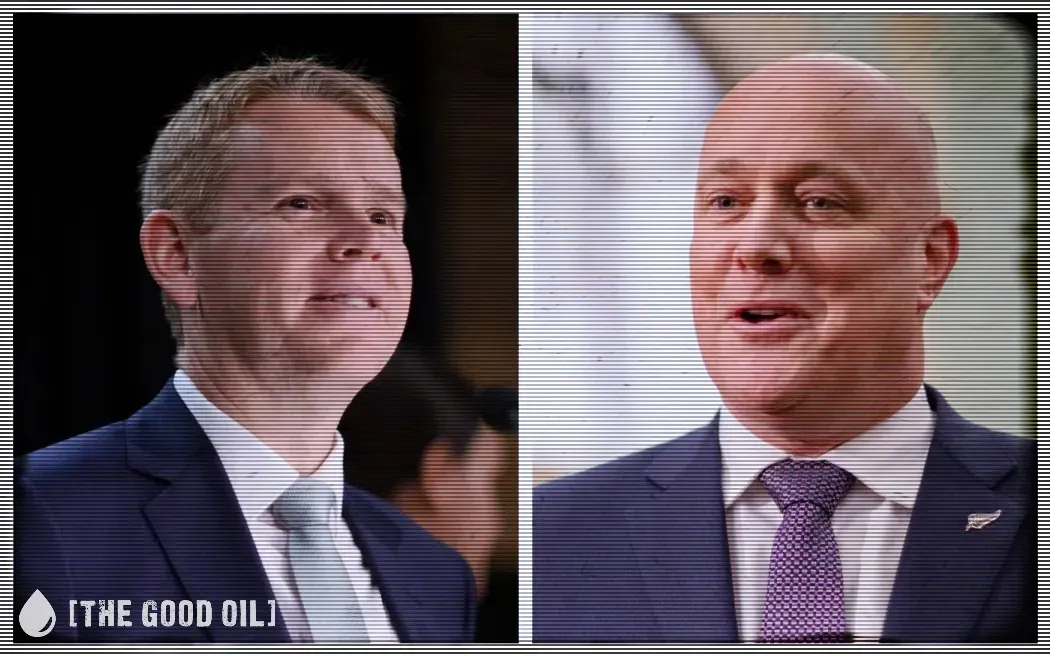Republished with Permission
Bryce Edwards
I am Political Analyst in Residence at Victoria University of Wellington, where I run the Democracy Project and am a full-time researcher in the School of Government.
Although the public and the public service are being told to tighten their belts, politicians continue to spend up large on themselves. The official statements of MPs’ and ministers’ expenses have recently been released, and they show that, instead of cutting back, the politicians are increasing their use of their allowances and often in questionable ways.
Every three months, the Parliamentary Service and the Department of Internal Affairs disclose the amount spent on accommodation and travel required for MPs and ministers to fulfil their duties. MPs’ expenses between April and June totalled nearly $2.1 million, while the ministerial expenses, including domestic and international travel, were $1.8 million. Compared to previous spending quarters, the latest numbers have gone up significantly.
Parliamentary travel and accommodation perks
Unsurprisingly, in the most recent quarter, the biggest spending ministers on travel have been the prime ,inister ($239,630), foreign minister ($208,051), and the trade minister ($127,247) – with the vast amount of those figures being spent overseas. In terms of domestic travel and accommodation, the biggest spender was the Minister of Regional Development Shane Jones ($53,610).
Aside from ministers, the biggest spender on airfares for the last quarter was Te Pāti Māori co-leader Debbie Ngarewa-Packer – with a total flying bill of $39,209. Part of this was spent on travel to Hawaii in June for an activist summit called “Protecting Oceania”.
Ngarewa-Packer’s airfare spend was significantly higher than the next biggest spending MP – Willie Jackson’s total airfare bill for the quarter was $24,036. This included the cost of $16,486 for his trip to the UK to appear in the Oxford Union debate. The next biggest spender on flights was Labour’s Kieran McAnulty, who also went to the UK on a “housing visit”, costing $6284, adding to his overall flying bill of $16,947.
Looking at all the expenses, including accommodation claims, the highest spending MP was also Ngarewa-Packer – her expenditure claim for the three months was $60,990. And the next largest spender was her co-leader Rawiri Waititi, who claimed $42,675 over the three months.
The next highest overall spenders were Willie Jackson ($39,870), Kieran McAnulty ($38,030) and NZ First’s Jamie Arbuckle ($34,447). All three of these MPs are list MPs, a role which isn’t generally associated with high travel bills, as they don’t need to service an electorate. In the case of Arbuckle, however, he is also an elected councillor on the Marlborough District Council and therefore has to commute more between his two jobs.
More questionable expenditure
Other high spending from politicians has also recently come to light. Two weeks ago, Philip Crump posted online about the spending details of two Labour politicians in 2023. He questioned why the then Labour MP for Rongotai, Paul Eagle, who stepped down at the election, had such significant spending on taxis and ground travel in the final six months of last year. Even though the MP was retiring, his domestic travel spend was about $21,000 – and about $15,000 was billed in the October to December period, even though the election occurred on 14 October, after which Eagle was no longer an MP.
Similarly, Crump raised questions about the parliamentary spending of former Labour MP Kiri Allan, who before departing parliament claimed about $9,000 in parliamentary reimbursements for driving she did during the last 12 months of her time as a minister. Crump questions why she would be using a car so much: “Given the reimbursement rate, Allan is effectively claiming to have driven the length of New Zealand in her own car numerous times whilst also being a minister, sitting MP and having use of a ministerial car, air flights and taxis.”
Also on social media, another amateur detective drew attention to recent OIA information to come out on Allan’s claimed expenses for attendance and and a speech at the “Wāhine Māori Leaders in Law Firms Conference” on Waiheke Island, just before her car crash. Sleuthing work apparently showed that “there is no conference website, no social media photos, no press releases and no trace of any such event”.
The Parliamentary Service could only find “a simple email from Allan’s ex-wife Natalie Coates, inviting her to Waiheke Island for the weekend to give a talk to a number of ‘Wāhine leaders’ at Kāhui Legal”. The then minister billed for the rental of a beach front apartment ($1,218, but Allan contributed an unspecified amount to the bill), and a rental car.
Politician credit card spending and allowances
Ministers also have a credit card that they can use for work expenses, and the details from these are also regularly released. 1News has been trawling through the latest ministerial credit card receipts, finding that the most interesting purchases are normally for gifts for foreign dignitaries. For instance, Prime Minister Christopher Luxon spent $399 buying a harmonica in Auckland, which he then gave to Prime Minister Rabuka of Fiji.
The cards are also used for eating out. Chris Bishop was one of the biggest spenders on the credit cards in the latest information release – most of it while on a trip to London and Switzerland earlier in the year. The frequency of visits to McDonald’s was noted, and a spokesman from Bishop’s office explained to 1News journalist Tom Day: “He also really likes fast-food. His waistline is proof of that.”
Ministers and MPs also receive a basic expense allowance which they receive to make up for out-of-pocket expenses, such as koha, flowers, luggage, buying raffle tickets, etc. MPs receive $16,980 each year, and the Prime Minister gets $26,606.
It’s not clear whether this basic allowance is meant to cover work clothes as well. In the past, the allowance rules stated that only the PM could use it for clothing and grooming.
This is has become a controversial issue in the UK, where Prime Minister Keir Starmer has been in trouble for accepting business funding to pay for expensive clothes for himself and his wife. However, Nicky Hager’s The Hollow Men book detailed corporate donations helping out with Don Brash’s wardrobe when he became leader of the opposition in 2003.
The issue of whether taxpayers should now fund New Zealand politicians to dress smartly has now been raised here. Newstalk ZB’s Ryan Bridge says he’s in favour: “I think we should publicly fund our leaders wardrobes. I’m just going to put it out there, I think we should. It’s important how we look on the world stage. In the world of geopolitics and diplomacy you need to look good. You need to look sharp and you need to need to look smart. We don’t want to be looking like some crackpot banana republic when we’re going to these events, do we?”
Are politicians spending too much on themselves?
Given that the coalition government has insisted on austerity for many sectors of the state – particularly the public service, and significant funding restraints on critical parts of the welfare state like Health – the public might wonder why politicians don’t also have to cut back. Shouldn’t the 6.5 per cent budget cut edict for government agencies not also apply to parliament?
Earlier in the year, Stuff journalist Andrea Vance also questioned why all the other big spending budgets for the politicians at parliament have been protected from cuts. She puts forward some of the perks that could be cut: “How about the bouquets of freshly cut flowers, replenished weekly around the parliament building? Heating the complex’s swimming pool for the exclusive use of MPs and parliamentary staff? Or the fluffy towels solely for members’ use in the precinct’s gym?”
Such petty spending wouldn’t save much. But Vance also points to some other bigger budgets that could be tightened: “Perhaps the ‘regular payment’ to MPs to pay for telephones and internet for their homes? Then there is the $52 million a year MPs and their parties get to support their work. (By the way, that includes funding some of their social media and advertising campaigns.) And what about the $3m a year on office supplies? And then there’s the $3.6m that will go into ‘inter-parliamentary relations’ over the next three years – that’s at least three overseas junkets for MPs.”
Secrecy over MP expense accounts
The biggest problem, however, with politician spending on themselves is that it’s so opaque. It’s very hard to uncover the information. Partly this is by design. The problem is that the Official Information Act doesn’t apply to Parliament – the politicians have exempted themselves.
This means that whenever journalists or members of the public have tried to hold politicians to account for spending of public money, they come up against a brick wall.
For example, Stuff’s Andrea Vance recently approached Te Pāti Māori about the spending of their MPs, but she says her requests for comment were ignored. She wanted to know how Debbie Ngarewa-Packer had managed to rake up an airfares bill of $39,209 in just three months.
Vance then went to both the Speaker Gerry Brownlee and the Parliamentary Service, and they declined to give details on what the money was spent on. According to the Parliamentary Service, individual MPs and parties must be asked for more information on their taxpayer expenditure: “It is up to each member to ensure that they are transparent to the public who will ultimately judge their actions.”
Some MPs and parties will provide answers to questions on their use of taxpayer money, but some clearly won’t. The public is therefore reliant on picking up bits and pieces of information here and there, and reliant on the willingness of politicians to front up on their spending.
Unfortunately, the government has just introduced new legislation to Parliament called “the Parliament Bill”, but it fails to deal with these issues. Although the bill is supposed to be about modernising the institution – and the government claims that it will help tidy up MP expenses – it appears to just further embed the secrecy of how politicians use public money.
Clearly, it’s time for reform in this area. But it won’t happen without public pressure on the politicians. Just as turkeys won’t vote for an early Christmas, politicians won’t willingly give the public any more information on how they operate and use the public’s money than they have to.
Key Sources
Ryan Bridge (Newstalk ZB): I’m not against publicly funding our politicians’ wardrobes
Tom Day (1News): McDonald’s and a harmonica – what ministers put on their credit cards
Department of Internal Affairs: Ministerial credit card statements and reconciliations
Susan Edmunds (RNZ): What perks do MPs really get?
David Farrar: Some hard to explain MPs expenses
Hamish McNeilly (Stuff): Ghost trip: Crown limo drives hundreds of kilometres with no passengers
Parliament: Members’ expense disclosure from 1 April to 30 June 2024
Andrea Vance (Sunday Star Times): This MP spent $39k on flights, but Te Pāti Māori won’t say why (paywalled)
Andrea Vance (the Post): If we can’t afford school lunches, why are we still paying for MPs’ perks? (paywalled)
This article was originally published on the author’s Substack.







